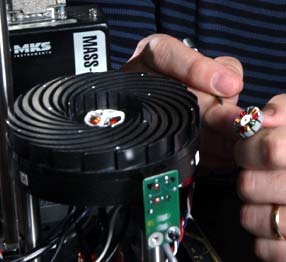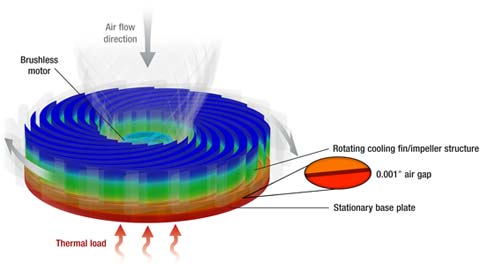Sandia Develops New CPU Cooler Design – CPU Cooling Breakthrough
Sandia National Laboratories has developed a new technology with the potential to dramatically alter the air-cooling landscape in computing and microelectronics, and lab officials are now seeking licensees in the electronics chip cooling field to license and commercialize the device. The Sandia Cooler, also known as the Air Bearing Heat Exchanger, is a novel, proprietary air-cooling invention developed by Sandia researcher Jeff Koplow, who was recently selected by the National Academy of Engineering (NAE) to take part in the NAEs 17th annual U.S. Frontiers of Engineering symposium. The design looks really interesting and we love the design, appearance and even the brushless motor!

In a conventional CPU cooler, the heat transfer bottleneck is the boundary layer of dead air that clings to the cooling fins. With the Sandia Cooler, heat is efficiently transferred across a narrow air gap from a stationary base to a rotating structure. The normally stagnant boundary layer of air enveloping the cooling fins is subjected to a powerful centrifugal pumping effect, causing the boundary layer thickness to be reduced to ten times thinner than normal. This reduction enables a dramatic improvement in cooling performance within a much smaller package.

Additionally, the high speed rotation of the heat exchanger fins minimizes the problem of heat exchanger fouling. The way the redesigned cooling fins slice through the air greatly improves aerodynamic efficiency, which translates to extremely quiet operation. The Sandia Coolers benefits have been verified by lab researchers on a proof-of-concept prototype approximately sized to cool computer CPUs. The technology, Koplow said, also shows great potential for personal computer applications.

Comments are closed.